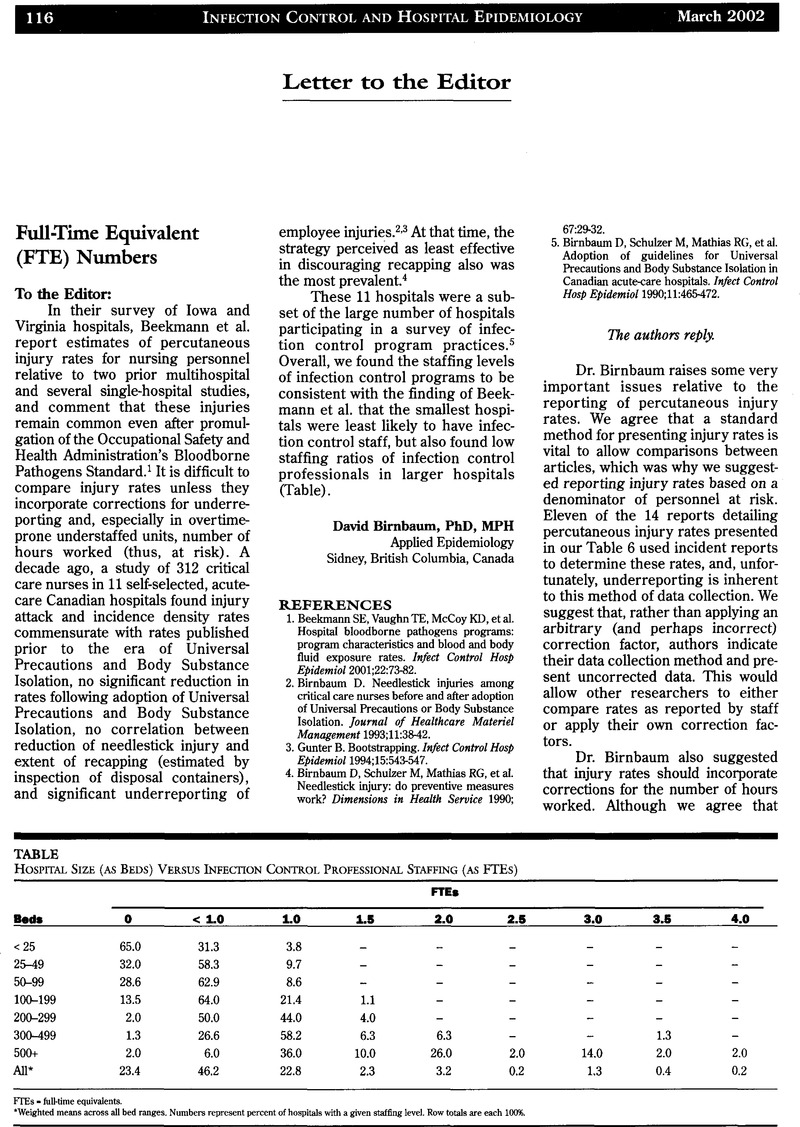No CrossRef data available.
Article contents
Full-Time Equivalent (FTE) Numbers
Published online by Cambridge University Press: 02 January 2015
Abstract
An abstract is not available for this content so a preview has been provided. As you have access to this content, a full PDF is available via the ‘Save PDF’ action button.

- Type
- Letter to the Editor
- Information
- Copyright
- Copyright © The Society for Healthcare Epidemiology of America 2002
References
1.Beekmann, SE, Vaughn, TE, McCoy, KD, et al. Hospital bloodborne pathogens programs: program characteristics and blood and body fluid exposure rates. Infect Control Hosp Epidemiol 2001;22:73–82.Google Scholar
2.Birnbaum, D. Needlestick injuries among critical care nurses before and after adoption of Universal Precautions or Body Substance Isolation. Journal of Healthcare Materiel Management 1993;11:38–42.Google Scholar
4.Birnbaum, D, Schulzer, M, Mathias, RG, et al. Needlestick injury: do preventive measures work? Dimensions in Health Service 1990;67:29–32.Google Scholar
5.Birnbaum, D, Schulzer, M, Mathias, RG, et al. Adoption of guidelines for Universal Precautions and Body Substance Isolation in Canadian acute-care hospitals. Infect Control Hosp Epidemiol 1990;11:465–472.Google Scholar




